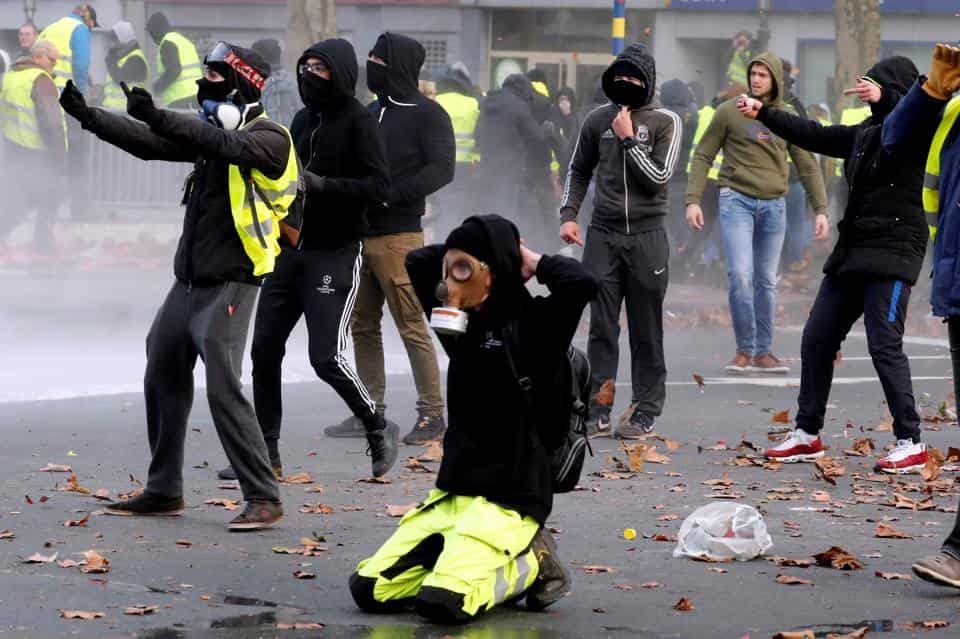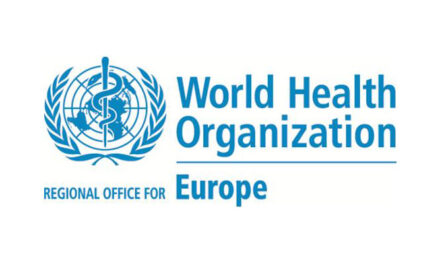French police arrested 1,700 people nationwide and held 1,200 in custody after containing several late-night skirmishes on Saturday.
About 179 people were hurt as extreme-right, extreme-left and anarchist elements defied riot forces in Paris.
The streets of Paris are returning to normal as crews remove debris after protests by a grassroots movement forced police to fire tear gas and water cannons just a week after extremely violent clashes led President Emmanuel Macron’s government to back down on fuel tax increases.
“The situation is under control,” Interior Minister Christophe Castaner said at a press conference Saturday night. Prime Minister Edouard Philippe, at the same briefing, again called for dialog with the so-called Yellow Vests and said Macron would propose new measures this coming week “to restore national unity.”
Museums and shops on the Champs-Elysees were to reopen Sunday, as well as the Eiffel Tower and iconic department store Galeries Lafayette.
While the tally of arrests was higher than last Saturday, the violence and number of injured didn’t reach the levels of a week ago when national monuments were trashed and cars burned throughout central Paris.
Many arrests were carried out early Saturday as police conducted searches ahead of the protests, seeking to prevent rioting. Tens of thousands of officers were deployed nationwide.
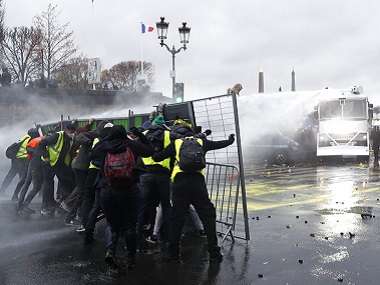
Demonstrators use street barriers to shieled from water cannons during a demonstration Saturday, Dec.1, 2018 in Paris.
An estimated 1,38,000 people took part in the protest across France, of which 10,000 were in Paris, according to the Interior Ministry on Sunday.
There were also clashes with police in Bordeaux, which continued into the evening, and in Toulouse, along with roadblocks on highways, including those near Lyon, Clermont-Ferrand and Albertville.
In Paris, protesters were mostly contained to the Champs-Elysees and surrounding avenues, such as avenue Marceau and boulevard de Courcelles, as well as near the Opera district.
On boulevard Poissonniere and boulevard Haussmann, some tried to erect barricades, using urban furniture and stones from the pavement, and defying police forces. Rioters looted a golf supply store, making off with clubs they used to smash the windows of bank branches.
There were clashes with police in Bordeaux, which continued into the evening, and in Toulouse, along with roadblocks on highways, including those near Lyon, Clermont-Ferrand and Albertville.
By early evening, the Champs-Elysees was mostly cleared of demonstrators and some traffic resumed. A few clashes continued around Place de la Republique, which was largely calm earlier in the day.
The violence appeared to have been caused by a mix of radicalized Yellow Vests, as well as unaffiliated anarchists and youths from Paris suburbs.
On the Champs-Elysees, many of the more peaceful Yellow Vests chanted for Macron to resign, while the more violent ones saved their vitriol for the police.
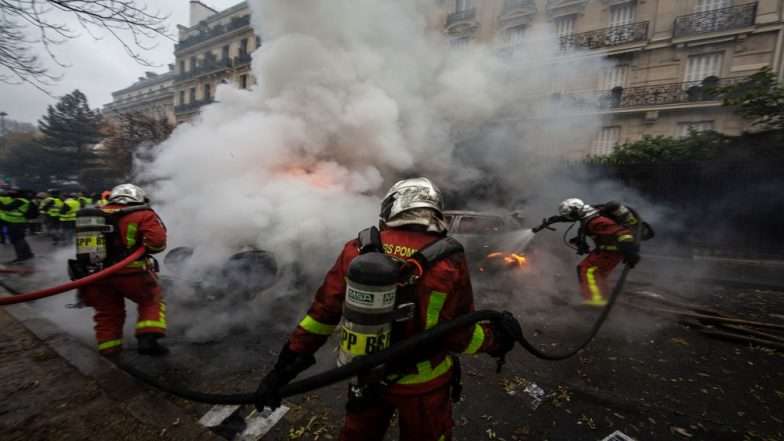
Castaner said the police had changed their tactics from last week, using more mobile units and searching suspected protesters before they reached the demonstrations.
Police found hammers, gas masks and petanque balls during early searches, Johanna Primevert, a spokeswoman for the police prefecture, said in an interview with BFM TV. ‘People have well understood that if they want to demonstrate peacefully, they have to submit to these checks,” she said.
For France, it was the fourth straight weekend of nationwide protests. They began last month to fight higher gasoline taxes and have now spread to other demands, reflecting complaints about purchasing power and a general dislike of Macron.
After the president this week retreated by canceling a fuel-tax increase planned for January, members of his government and even some members of opposition parties had called on the Yellow Vests to ignore calls for fresh protests after last weekend’s demonstrations led to widespread vandalism and car burnings across Paris.
“The movement has given birth to a monster,” Castaner said Friday as he detailed security measures at a news conference.
More than 89,000 officers were deployed to maintain order, including 8,000 in Paris where demonstrators a week ago torched cars, fought with riot police and vandalized the Arc de Triomphe. Police in the capital were backed up by a dozen armored vehicles.
The grassroots movement named after the vests that all motorists must keep in their cars has led to sporadic blockades of roads, fuel depots and warehouses since the first “day of action” November 17. It’s organised through social media and has no leadership, but has the support of three-quarters of the French public, polls show.
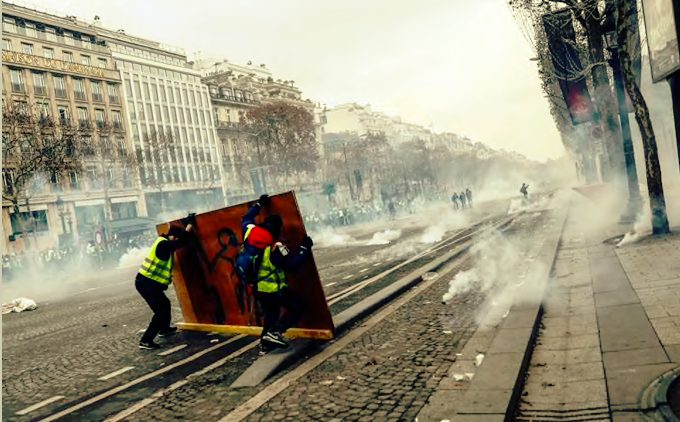
The movement’s demands have also expanded to higher pensions, an increase in the minimum wage, a repeal of other taxes, the restoration of a wealth tax, a law fixing a maximum salary, and replacing Macron and the National Assembly with a “People’s Assembly.”
While political parties have tried to show their support for the movement, the Yellow Vests have rejected any political link.
At first the government dismissed the movement, saying the higher gasoline taxes had been compensated by cuts in payroll taxes.
Then it sought to highlight its contradictory demands, which include fewer taxes and better services. As popular support for the movement rose and violence spread, Macron returned from a G-20 summit in Argentina last Sunday to hold a series of emergency meetings that led with scrapping next year’s fuel-tax hikes, a rare retreat for the stubborn 40-year-old.

